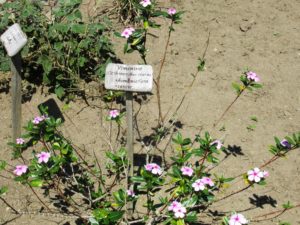Having visited Ranomafana National Park, I suggested visiting the nearby “Centre ValBio”:https://www.stonybrook.edu/commcms/centre-valbio/ which I’d read about in the guidebook. It was said to be a ‘state-of-the-art international study centre’ whose 40 researchers were the backbone of conservation in the park.
On arrival, our guide had extensive paperwork to complete, both at the security gate and reception. We amused ourselves by looking at the views from the balcony and the small shop with ethically made items which included lovely scarves, which I subsequently wished I’d bought.
Our guide, Caroline, was just starting her introduction when she pointed out Patricia Wright, the American founder of the centre and a leading expert in lemur. She’d just arrived on a trip from the US, but spotted us and came over to say hello. She was most excited as her latest research paper had just been published, which proved man had existed in the area 10,000 years ago and not 2,000 as originally believed – this had been proved by human cuts in the bones of various animals which had been found and had been accurately dated in the US. She happily posed for photographs with an original aepyornis (elephant bird) egg taken from a nearby display cabinet. We left clutching a copy of the paper, which she signed, and their latest newsletters.
Excitement over, we continued our tour through the various areas. The first was dedicated to health research, where, surrounded by a pile of medicines, we learned about the initiatives being undertaken to develop treatments for medical problems. External stairs took us to the roof garden where medicinal plants were being grown. There was also a small vegetable patch designed to prove to villagers that they didn’t need a lot of land to grow food for themselves.
We moved downwards to meet their resident artist who showed us fabulous pictures he’d done to create educational materials for visiting schoolchildren. He also showed us a drawing of how they intended to use a new bio diversity centre being built and we saw beautiful embroideries depicting the various species of lemurs and frogs found in Ranomafana.
Passing locked laboratories, we crossed to a second building housing a workshop where huge drones were being built: they will be used to drop medicines and other supplies into remote or areas cut off during the rainy season.
A large open-plan area formed the central research centre where specialists in various aspects were congregated around PCs.
It was fascinating seeing the work being done, but the icing on our cake was meeting Patricia.









